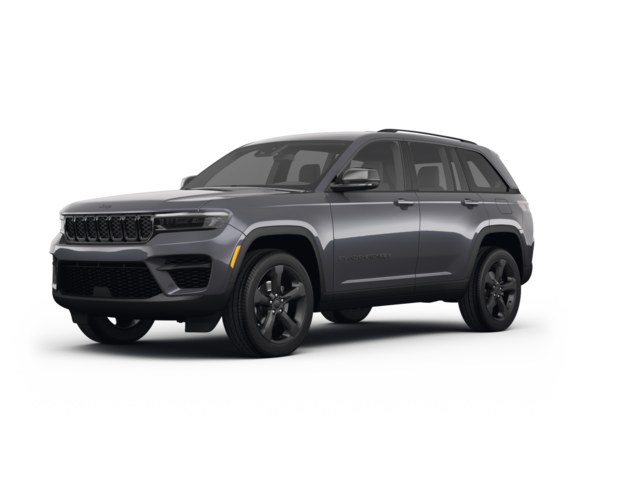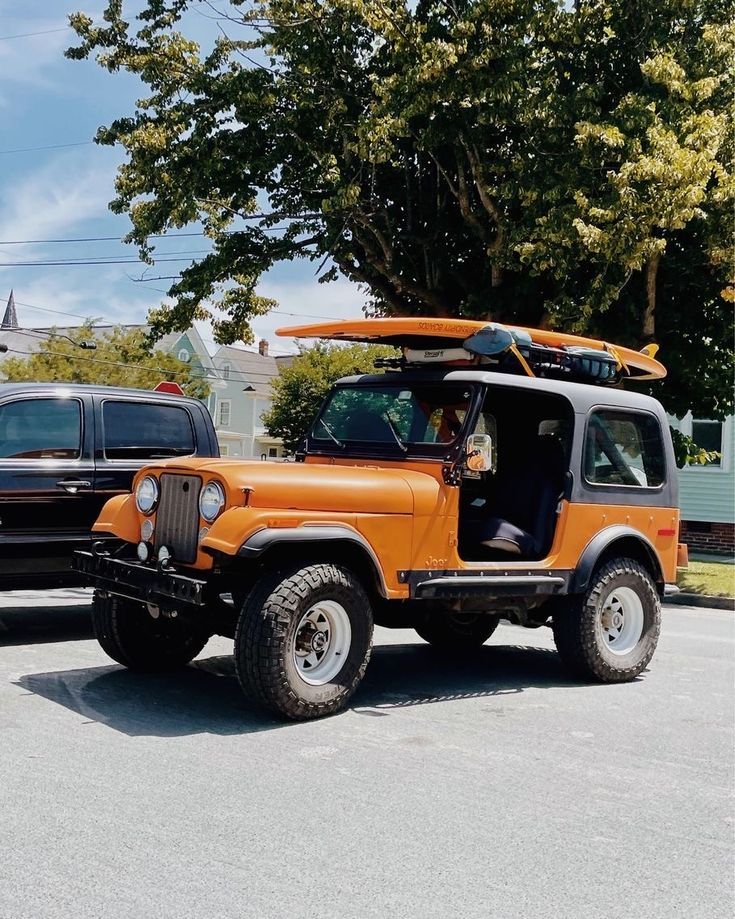Willy Jeep Truck For Sale: Your Comprehensive Guide to Owning a Legend
Willy Jeep Truck For Sale: Your Comprehensive Guide to Owning a Legend jeeps.truckstrend.com
Introduction: The Unmistakable Charm of a Willys Jeep Truck
Few vehicles command the same nostalgic reverence and rugged admiration as the Willys Jeep Truck. Born from the legendary utility of its military predecessors, the Willys-Overland civilian trucks, produced from 1947 to 1965, quickly established themselves as an American icon. These robust 4×4 workhorses, available as pickups, station wagons, and even panel delivery vans, weren’t just modes of transportation; they were tools, adventurers, and symbols of an era when simplicity met unparalleled capability.
Willy Jeep Truck For Sale: Your Comprehensive Guide to Owning a Legend
Today, the desire for a Willys Jeep Truck is stronger than ever. Whether you’re a collector seeking a piece of automotive history, an off-road enthusiast looking for a unique vintage rig, or simply someone who appreciates timeless design and mechanical integrity, finding a Willys Jeep Truck for sale can be an exciting, albeit challenging, endeavor. This comprehensive guide will navigate you through the journey of understanding, finding, evaluating, and ultimately owning one of these remarkable vehicles.
The Enduring Legacy: Why Buy a Willys Jeep Truck?
The appeal of the Willys Jeep Truck extends far beyond its utilitarian aesthetics. Its enduring popularity stems from a blend of historical significance, inherent durability, and a unique driving experience.
- Historical Significance: Directly descended from the WWII MB and Ford GPW military Jeeps, the Willys civilian trucks carried forward a legacy of unwavering reliability and adaptability. Owning one is like owning a tangible piece of post-war American ingenuity and resilience.
- Robustness and Simplicity: These trucks were built for hard work. Their ladder frames, solid axles, and straightforward mechanical systems (often powered by the iconic "Go-Devil" L-head or "Hurricane" F-head four-cylinder engines) are renowned for their longevity and ease of maintenance. Without complex electronics, they offer a refreshing back-to-basics driving experience.
- Unmatched Versatility: From hauling feed on a farm to navigating rugged trails, the Willys Truck was designed to tackle diverse tasks. Its legendary 4×4 capability makes it a formidable off-roader, while its distinct styling ensures it turns heads at any car show or local cruise.
- Investment Potential: As classic vehicles, well-maintained or expertly restored Willys Jeep Trucks have shown consistent appreciation in value. They are not just a purchase but potentially a sound automotive investment, particularly for rare models or those with unique historical provenance.
- Nostalgia and Community: For many, the Willys Truck evokes memories of a simpler time. Driving one connects you with a passionate community of enthusiasts who share knowledge, parts, and stories, enhancing the ownership experience significantly.

Understanding the Different Willys Jeep Truck Models
While often broadly referred to as "Willys Jeep Trucks," there were distinct models and variations produced over nearly two decades. Understanding these differences is crucial for prospective buyers.
The primary models relevant to the "Willys Jeep Truck For Sale" search are:
:max_bytes(150000):strip_icc():focal(750x298:752x300)/willy-wonka-gene-wilder-071323-7293e589e5f145f28469455b17e1ae15.jpg)
- Willys Jeep Pickup (1947-1965): This is the most common and recognizable "truck" variant. Early models (1947-1950) featured a flat grille with headlights positioned above the slats, often referred to as "flat-fender" trucks. Later models (1950-1965) adopted a more conventional V-shaped grille with headlights integrated into the grille, similar to the CJ-3A/B. They were available in two-wheel-drive (2WD) and four-wheel-drive (4WD) configurations, with the 4WD being significantly more popular and sought after today.
- Willys Jeep Station Wagon (1946-1965): Though technically a wagon, these vehicles shared the same robust chassis and powertrain as the pickup trucks and were often used in similar utility roles. They were among the first all-steel station wagons and were popular for both commercial and family use.
- Willys Jeep Panel Delivery (1947-1963): A commercial variant of the station wagon, featuring solid panels instead of rear windows, designed for businesses needing enclosed cargo space.

Key Mechanical Aspects:
- Engines: The earliest trucks typically featured the 60 hp "Go-Devil" L-head 4-cylinder engine. Later models, especially after 1950, were often equipped with the more powerful 75 hp "Hurricane" F-head 4-cylinder. A few six-cylinder engine options (like the "Super Hurricane" and "Lightning") were also available in later years or specific configurations.
- Transmissions: Most came with a 3-speed manual transmission, often with an optional overdrive unit.
- Transfer Cases: Dana 18 transfer cases were standard for 4WD models, providing robust power distribution to both axles.
Knowing the production years and common features for each model will help you identify the specific truck you’re looking at and understand its originality.
Where to Find Your Dream Willys Jeep Truck
Finding a Willys Jeep Truck for sale requires a targeted approach, as they are classic vehicles and not readily available on every used car lot.
- Online Marketplaces:
- Dedicated Classic Car Sites: Hemmings, ClassicCars.com, Bring a Trailer, and eBay Motors are excellent resources. Bring a Trailer, in particular, often features high-quality restored or unique examples.
- General Classifieds: Craigslist and Facebook Marketplace can yield local finds, often at lower prices, but require more diligent vetting due to varied seller quality.
- Specialized Forums & Clubs: Online forums dedicated to Willys Jeeps (e.g., WillysTech.com, eWillys.com) often have "for sale" sections where enthusiasts sell directly to other enthusiasts.
- Specialized Classic Jeep Dealers: A handful of dealers specialize in vintage Jeeps and 4x4s. While prices might be higher, you often get a pre-vetted vehicle, sometimes with a warranty or post-sale support.
- Auctions: Online and in-person classic car auctions (e.g., Mecum, Barrett-Jackson for high-end, or local estate auctions for projects) can be good sources, but require quick decision-making and thorough pre-bidding inspection.
- Word-of-Mouth & Local Finds: Don’t underestimate the power of networking. Talk to local mechanics, attend classic car shows, and even put out feelers in rural areas where these trucks were commonly used. You might stumble upon a barn find.
- Restoration Shops: Some shops that specialize in Willys restorations occasionally have completed vehicles for sale or can connect you with owners looking to sell.
Key Considerations Before Buying: What to Look For
Purchasing a vintage vehicle, especially one as utilitarian as a Willys Jeep Truck, requires careful inspection and realistic expectations.
- Condition, Condition, Condition: This is paramount and directly impacts the price and future investment.
- Rust: The biggest enemy. Check frame rails (especially near spring hangers and body mounts), floorboards, rocker panels, bed floors, and fenders. Surface rust is manageable; structural rust is a major red flag and costly to repair.
- Body & Paint: Look for dents, previous accident damage, poor bodywork, and bubbling paint (indicating hidden rust). Original paint, even if faded, can be more valuable to collectors than a cheap respray.
- Chassis & Suspension: Inspect the frame for cracks, bends, or poor repairs. Check leaf springs for sagging, shackles for wear, and shock absorbers for leaks.
- Powertrain:
- Engine: Look for oil leaks, listen for unusual noises (knocks, rattles), check for excessive smoke from the exhaust (blue for oil, white for coolant, black for rich fuel). A compression test is highly recommended.
- Transmission & Transfer Case: Check for leaks, ease of shifting, and listen for grinding or whining noises. Engage 4WD to ensure it works properly.
- Axles: Check for leaks around differentials and wheel bearings. Listen for humming or clunking noises.
- Electrical System: Willys trucks have simple 6-volt (earlier) or 12-volt (later) systems. Check all lights, gauges, and wiring for corrosion or shoddy repairs.
- Brakes & Steering: Ensure brakes are firm and stop the vehicle straight. Check for play in the steering wheel and any wandering during driving.
- Interior: While basic, check the condition of the seat upholstery, gauges, and any aftermarket additions. Originality here can add value.
- Originality vs. Modified: Decide what you want.
- Restored to Original: Highest value, often show quality. Every part matches factory specifications.
- Survivor: Original paint and components, well-preserved but with patina. Highly sought after by some collectors.
- Resto-Mod: Modern engine, transmission, brakes, or suspension swapped in for improved driveability and safety. Less valuable to purists, but much more practical for regular use.
- Project/Parts Vehicle: Cheapest, but requires significant time, money, and skill. Only consider if you have the resources.
- Paperwork: Ensure the seller has a clear, transferable title that matches the VIN on the vehicle. Verify the VIN and ensure there are no liens. Ask for maintenance records if available.
- Budget: Beyond the purchase price, factor in potential restoration costs, immediate repairs, insurance, registration, and transportation. Restorations can easily cost tens of thousands of dollars.
The Buying Process: A Step-by-Step Guide
Once you’ve identified a potential Willys Jeep Truck for sale, follow these steps to make an informed purchase:
- Define Your Needs and Budget: Before you even start looking, know what model year, condition, and configuration you prefer, and establish a firm budget that includes purchase price, transport, and initial maintenance/repairs.
- Thorough Research: Learn about the specific model year you’re interested in, common issues, and part availability.
- Initial Contact & Information Gathering: Contact the seller. Ask specific questions about the truck’s history, mileage (if known), last service, known issues, and why they are selling. Request a comprehensive set of photos and videos, including detailed shots of common rust areas, the engine bay, and undercarriage.
- In-Person Inspection (or Proxy): If possible, always inspect the vehicle in person. Bring a flashlight, magnet (to detect body filler), and a knowledgeable friend or mechanic. If an in-person visit isn’t feasible, hire a reputable pre-purchase inspection (PPI) service specializing in classic vehicles. This is money well spent.
- Test Drive: If the vehicle is running, take it for a test drive. Listen for noises, feel for vibrations, check steering, braking, and transmission shifts. Test the 4WD system if applicable.
- Negotiation: Based on your inspection, current market values, and any identified issues, negotiate a fair price. Be prepared to walk away if the price isn’t right or if the seller is unwilling to address concerns.
- Paperwork & Payment: Once an agreement is reached, ensure all paperwork (title, bill of sale) is correctly filled out and transferred. Avoid cash transactions unless absolutely necessary; use secure methods like bank transfers or cashier’s checks.
- Transportation: Arrange for safe transport of your new acquisition, especially if it’s a non-runner or a project vehicle. Enclosed transport is recommended for pristine vehicles.
Owning a Willys Jeep Truck: Maintenance and Enjoyment
Owning a Willys Jeep Truck is a rewarding experience, but it comes with unique considerations.
- Parts Availability: Surprisingly, many mechanical parts (engine components, transmission parts, suspension) are still available through specialty suppliers and reproduction companies. Body panels and unique trim pieces can be harder to find and more expensive. Joining Willys owner forums and clubs is invaluable for sourcing parts and advice.
- Maintenance: These trucks are relatively simple to maintain, making them ideal for DIY enthusiasts. Regular oil changes, lubrication of chassis components, and checking fluid levels are crucial. Be mindful of their age; seals and gaskets may need replacement, and wiring can become brittle.
- Driving Experience: Don’t expect modern car comforts. Willys trucks are noisy, lack power steering or power brakes (in most cases), and are not designed for highway speeds. They excel off-road or at lower speeds on rural roads. Embrace the raw, connected driving experience.
- Community: Connect with other Willys owners! Clubs and online communities offer a wealth of knowledge, shared experiences, and camaraderie. Attending classic car shows or Jeep events is a great way to show off your truck and learn from others.
Willys Jeep Truck For Sale: Estimated Price Guide
Prices for Willys Jeep Trucks vary wildly based on year, model, condition, originality, and location. This table provides a general estimate and should be used as a guideline only. Always conduct thorough research and inspection.
| Condition Category | Estimated Price Range (USD) | Notes |
|---|---|---|
| Project/Parts Vehicle | $2,000 – $8,000 | Non-running, significant rust, missing components, suitable for full restoration or parts donor. Requires substantial investment of time and money. |
| Running/Driving (Needs Work) | $8,000 – $18,000 | Runs and drives but has significant mechanical issues, rust repair needed, worn interior, or rough paint. Functional but requires ongoing repair to be reliable. |
| Good Driver (Minor Issues) | $18,000 – $30,000 | Mechanically sound, minimal rust, presentable paint (older repaint or good original patina), functional interior. Can be enjoyed as is, with potential for future improvements. |
| Nicely Restored/Original Survivor | $30,000 – $55,000 | High-quality restoration or exceptionally well-preserved original vehicle. All systems functional, minimal flaws, solid body. Ready for regular driving and local shows. |
| Show Quality/Concours | $55,000 – $80,000+ | Meticulously restored to original factory specifications, flawless paint, perfect interior, all systems rebuilt. Suitable for national shows and serious collectors. Rare models may exceed this. |
Disclaimer: These are broad estimates. Factors like specific model (e.g., rare variants), historical provenance, inclusion of original accessories (PTO, winches), and market demand in a specific region can significantly influence the actual sale price. Always inspect thoroughly and consider a pre-purchase inspection.
Frequently Asked Questions (FAQ) about Willys Jeep Trucks
Q: Are parts readily available for Willys Jeep Trucks?
A: Yes, many mechanical parts are surprisingly available through specialty suppliers like Kaiser Willys Auto Parts, Walck’s 4WD, and various online forums. Body panels and unique trim can be harder to find but reproductions exist.
Q: Can I drive a Willys Jeep Truck daily?
A: While mechanically robust, they lack modern safety features, comfort, and highway speed capabilities. Daily driving is generally not recommended for extended periods, especially on busy highways. They are best suited for recreational use, light utility, or weekend cruises.
Q: What’s the fuel economy like?
A: Don’t expect much. The old L-head and F-head engines, combined with the heavy 4×4 drivetrain, typically yield around 10-15 miles per gallon, depending on driving conditions and engine tune.
Q: Is it hard to work on a Willys Jeep Truck?
A: No, quite the opposite. Their simple, mechanical nature makes them relatively easy for a DIY enthusiast to maintain and repair. There are no complex computer systems or extensive wiring harnesses to troubleshoot.
Q: What’s the difference between a Willys Jeep Truck and a CJ?
A: The Willys Jeep Truck (Pickup and Station Wagon) is built on a longer, heavier-duty chassis than the shorter, more agile CJ (Civilian Jeep) series (CJ-2A, CJ-3A, CJ-5, etc.). While they share some design cues and powertrains, the truck was designed for more utility and cargo capacity, whereas the CJ was more of a compact, versatile vehicle.
Q: What should I look for regarding rust?
A: Pay close attention to the frame (especially near spring mounts and body mounts), floorboards, rocker panels, lower door corners, bed floor, and fenders. Rust in structural areas is a major concern.
Q: How much does it cost to restore a Willys Jeep Truck?
A: A full, professional, body-off restoration can easily cost anywhere from $30,000 to $80,000 or more, depending on the initial condition, desired level of perfection, and labor rates. DIY restorations can save on labor but still require significant investment in parts and materials.
Conclusion: Driving History Home
The Willys Jeep Truck for sale market offers a unique opportunity to own a piece of automotive history – a vehicle that embodies rugged utility, timeless design, and a spirit of adventure. Whether you envision it as a meticulously restored showpiece, a capable off-road companion, or a charming daily driver for rural errands, careful research and a thorough inspection are your most valuable tools.
By understanding the different models, knowing where to look, diligently assessing condition, and being prepared for the realities of classic vehicle ownership, you can confidently navigate the journey. Owning a Willys Jeep Truck isn’t just about having a vehicle; it’s about embracing a legacy, connecting with a vibrant community, and enjoying a driving experience that truly stands apart. Your adventure with a Willys legend awaits.





